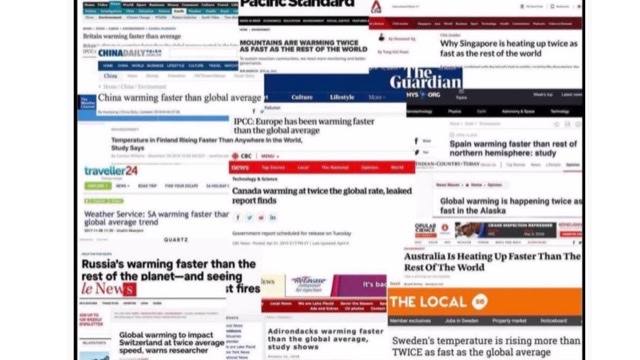Chuck, you completely missed the point as usual.
You made the ridiculous statement that you had picked a point in a rural area, therefore it was representative of the rural area, and not any urban area.
What I am pointing out, is that there are almost no rural stations, at least not in the last few decades. So any square you pick on the map outside of an urban area, is just a blend of the nearest urban areas.
There is no data for the random square you picked. Just infilled from the nearest stations.
And if you bother to check the actual data, you will discover that much of the data from the existing urban stations is completely missing and had to be infilled from somewhere else, or guessed. Most of this map is a guess based on a guess based on a guess from somewhere far away. Cherry picked to not include all of the warm period prior to the 50's, and so far, not updated to show the cooling trend and shorter growing season going on now.
And as Blaithin pointed out, there are major discrepancies between the EC and the AFSC precipitation totals in the modern instrument era. Now we are supposed to believe that the data from 70 years ago, using the technology of today is fit for purpose, when todays data clearly is not. When the difference between the sets of two stations Blaithin posted are far far larger than any detectable trend over 70 years, what does that tell you about the reliability of that trend?
You made the ridiculous statement that you had picked a point in a rural area, therefore it was representative of the rural area, and not any urban area.
What I am pointing out, is that there are almost no rural stations, at least not in the last few decades. So any square you pick on the map outside of an urban area, is just a blend of the nearest urban areas.
There is no data for the random square you picked. Just infilled from the nearest stations.
And if you bother to check the actual data, you will discover that much of the data from the existing urban stations is completely missing and had to be infilled from somewhere else, or guessed. Most of this map is a guess based on a guess based on a guess from somewhere far away. Cherry picked to not include all of the warm period prior to the 50's, and so far, not updated to show the cooling trend and shorter growing season going on now.
And as Blaithin pointed out, there are major discrepancies between the EC and the AFSC precipitation totals in the modern instrument era. Now we are supposed to believe that the data from 70 years ago, using the technology of today is fit for purpose, when todays data clearly is not. When the difference between the sets of two stations Blaithin posted are far far larger than any detectable trend over 70 years, what does that tell you about the reliability of that trend?

Comment